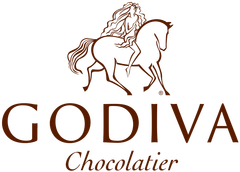
When I traveled for business more than I do now, I’d occasionally come across a Godiva boutique and add a small purchase of their memorable chocolates to my personal expenses.
It was a pleasant surprise to turn a corner in some upscale mall or market and spot the luxurious Godiva logo. No matter where my thoughts had been, they immediately shifted to “chocolate” and the stolen moment I was about to experience.
I always picked the simplest dark piece from among the tempting individual choices and array of gold boxes – nothing fancy, just the one I imagined would deliver the purest Godiva experience without complicating it with other flavors. After enjoying one (maybe two if I wasn’t in a hurry), the rest of my purchase got packed away for the trip home.
Now flash forward to news that Godiva has launched a temptation called Trufflelata™, a creamy soft-serve shake made right there in the boutique with your favorite truffle blended in: Chocolate Lava Cake, Salted Caramel, Strawberry Crème, Hazlenut Crunch -- even Oreo Trufflelata. Take your delightful pick.
The alluring Trufflelata description and photography reminds me how good Godiva is at making us crave their products (with packaging, color, lighting, visual impact, aroma) -- same for their line of GODIVA Liqueurs announced earlier this year, including a Dark Chocolate offering they describe as “a delicious full-flavored indulgence with less guilt.”
From way back in 1926, when chocolatier Joseph Draps first opened his Brussels shop, Godiva has been superb at crafting words to describe their “extraordinary richness and design, a collection of passion and purity” (the founder's words). Today’s wordsmiths describe Godiva as “a sought after name with the timeless quality of passion, style, sensuality and modern boldness.” Their corporate boilerplate proclaims GODIVA Chocolatier as a brand that “consumers universally associate with prestige, elegance and quality …”
I am taken with Godiva’s consistent ability to describe itself in words that haven’t strayed far at all from their founder’s original pronouncement -- many of the same “notes” are there. It’s a perfect example of Marketable Truth©, the authentic difference at the core of a product or service that speaks to its enduring competitive advantage. When you couple their words with the product experience, it’s clear their “decadent offerings” deliver. You can taste Godiva's truth.
How well regarded is Godiva among chocolate aficionados? Very well, you’d think. But chocolate purists often take exception with Godiva’s vaulted reputation, and some even have been known to make unkind comments when comparing the maker to those whose chocolates they consider more sublime (and perhaps more rare). So maybe Godiva isn’t the best chocolate in the world, but neither is it the most expensive -- by far. But to me, Godiva is both rare and costly. I pay for -- and thoroughly enjoy -- the Godiva experience.
After a bit of dip during the recession, Godiva Chocolatier continues its global growth. The company now is Turkish-owned, after 40 years under the Campbell Soup corporate umbrella, and has 450 worldwide boutiques. Their $500-million or so in sales revenue is a drop in the bucket compared to the $75-billion worth of chocolate sold globally (U.S. total chocolate sales estimates are $18-20bn, about 25% of which is the premium market).
In researching this story, I learned that women crave chocolate more than men, which doesn't seem all that surprising to this husband and father of three daughters. As a friend points out, all you've got to do is walk through a crowded mall with a Godiva gift bag under your arm and see how many ladies' glances you get.
These days you can buy their chocolate bars at Target for around four bucks (“Expect More. Pay Less”). The company also has introduced a line of tiny Godiva Gems wrapped in colored paper for sale in food and drug stores. Which makes me wonder whether making the brand so universally available in the short run risks watering it down in the long run.
It used to be that if you couldn’t afford $20,000 for a new car you could treat yourself to 10-bucks worth of Godiva chocolate a couple of times a year if you were fortunate to find one of their boutiques or specialty retailers. An important ingredient of their marketing success was scarcity, which made your $10 purchase seem a bit like found gold. Today, the new car you can't afford costs around $60,000, but your Godiva treat is still within reach at $26, a high enough price to make it an investment in self-worth vs. a reflection of net worth.
So, while you’re savoring your Godiva truffle, sipping your Godiva liqueur or relaxing with a cup of Godiva coffee “inspired by our finest flavors”, think about where the brand lives in your mind these days. Godiva has insinuated itself into your being for a long time now and is likely to stay there despite its latter-day mass market adventurism. The brand retains its set-apart image largely because of Godiva's exclusive positioning over many years, making it a brand that “consumers universally associate with prestige, elegance and quality.”
Frankly, though, I'd hate to see Godiva become a product so common that you can find it almost anywhere. It just doesn't seem so wickedly worth it when you buy it at Target.
TakeAway: If you sell a premium brand, plant its exclusivity deep in people’s minds. And don't try to grab somebody else's customers by going down market when things get tough. Stick with your brand promise. Your patience will be rewarded.
Content © by Brian E. Faulkner
About Brian Faulkner:
> blogs to establish you as the thought leader / authority in your business category
> case stories that communicate your sales successes and invite prospect inquiry
> testimonials that showcase customer / client satisfaction in 1-2 short sentences
> positioning statements to guide business development & marketing
> landing page copy to set your business or brand apart in a compelling way
> tagline development to attract the interest of your most qualified prospects
Brian also is a three-time Emmy award-winning Public Television writer and narrator of over 100 segments for UNC-TV’s popular “Our State” magazine series, on the air since 2003.

 RSS Feed
RSS Feed